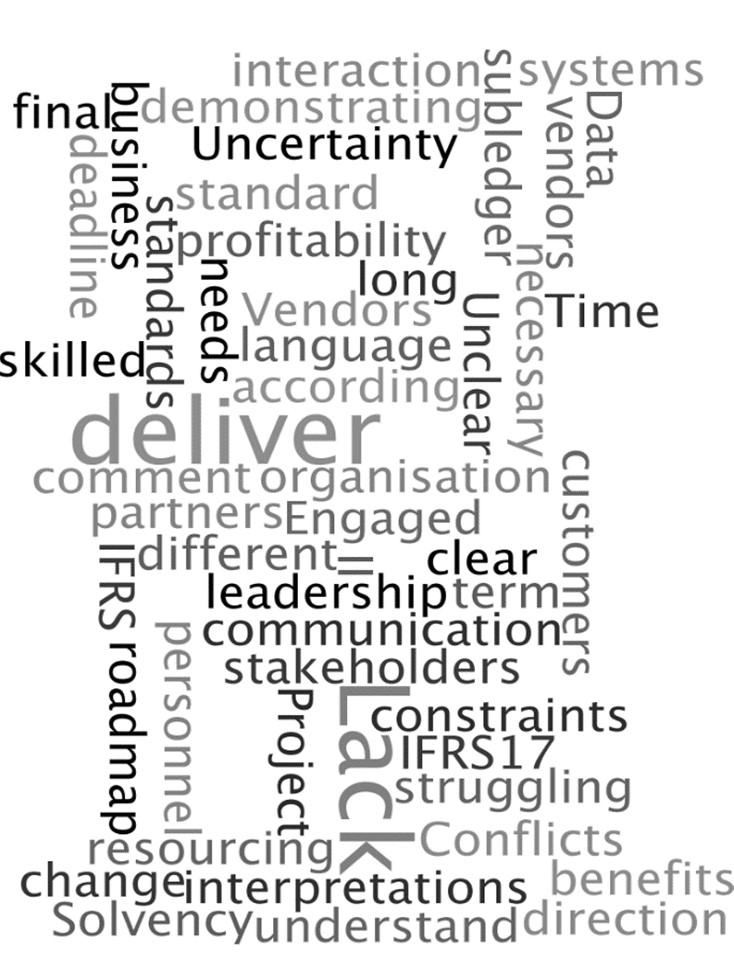Challenges: What is the single biggest issue?
Let people say what they want, and they will …
In this question respondents were given an opportunity to say what was important to them without any prompting or guidance. The same four categories emerged as the previous question.
People issues
Respondents identified challenges in resourcing and recruiting skilled people and of lack of skills in their own organisations. Communication has come up in several categories.
Project issues
Respondents’ biggest concerns were timing, cost and clarity of delivery. Many respondents were unclear about what exactly they were supposed to be doing.
Some respondents stated that insurers had underestimated the cost and effort of, this is reflected in the data. In 2017, 80% or insurers were confident that implementations would cost less than US$100M. 2 years later the results were reversed – same people and solutions, but insurers had realised their up-front ambitions had been inaccurate.
Timing, like cost has been underestimated . Timing and planning are interlaced. Timing is dependent on the effort required divided by the effort available to complete the required work; this is immutable.
Comments were made about unclear planning / roadmap / strategy. If the end objective is unclear, people will not be able to focus on the ultimate outcome. Compounding these, some respondents stated their project teams were ineffective.
Governance
There are two groups of issues: leadership and vendor management.
Leadership issues included decision paralysis –not knowing what to do, delaying projects. Lack of clear direction too. These relate to issues with unlcear TOMs (pg 6) and unclear plans (pg 8). Respondents stated that insurers had underestimated the work required and were unprepared for change that they inexperienced to deliver.
Respondents raised a long-term challenge at many insurers; that of the organisational and cultural separation between different departments. We have long observed that tech and data will link all areas of a business. Traditional lines of demarcation are barriers \ to change. Some respondents now realise this to be the case, others simply wish to hang on to traditional silos.
The second grouping is about vendor management and procurement approaches. Earlier we saw respondents complaining about vendors overpromising their capabilities. Here respondents complained that vendors could not deliver (for a range of reasons).
Vendors felt that procurement exercises were short and often arbitrary. We note from the leadership question, few leadership teams include vendor managers (page 6). This is a unfortunate as procurement is about 5% of the overall project workload.
Technical issues
Management of data was commonly cited as an issue. Out-moded back-office systems were often referenced, having been neglected for years. Management and flow of data is a common problem, not surprising as many insurers have unclear or no TOMs (page 6).
Respondents lamented that major systems changes were enforced by updates to other legacy systems – they hadn’t been kept up to date, so transformation initiatives caused a tipping point where massive changes were required all at once. This is non-trivial for any business.









